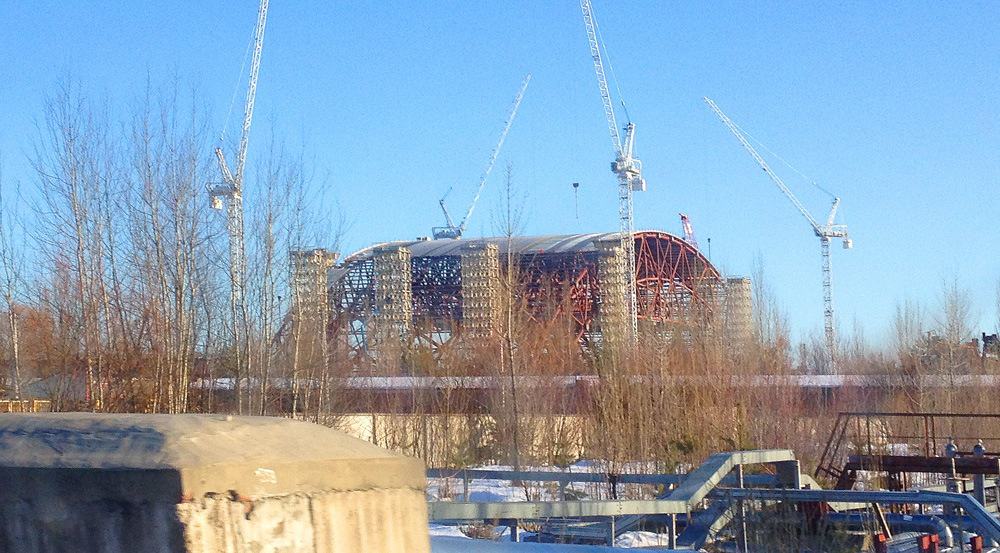Chernobyl new safe confinement
The company Jean Lutz SA provided instrumentation on the site of the new sarcophagus at Chernobyl.
The objective: To monitor the installation of the piles which supported the rails on which the monumental construction is moved.
The stakes of the Chernobyl shipyard
On 26 April 1986, the Chernobyl No. 4 reactor on the border of Ukraine and Belarus exploded.
The melted core of the reactor was hastily covered. They quickly built a sarcophagus composed of 7300 tons of metal architecture and 400 000 cubic meters of concrete, but the structure cracked in the 1990s, and threatens to leak radioactive materials.
In 2007, work on the design and construction of a new arch was entrusted to Novarka, a joint venture between Bouygues and Vinci. A unique project, this arch will completely enclose the current sarcophagus. Its purpose is the containment of radioactive materials, the protection of workers on site, the protection of the existing sarcophagus against climatic aggressions, and will eventually lead to the dismantling of unit 4 of the plant.
The arch, an unprecedented technical feat
Composed of a 2,500-tonne metal frame, the arch reaches enormous dimensions: 108 m high, the equivalent of a 30-storey building, 162 m long and 257 m in span, which would make it possible to cover the Stade de France.
Based on two concrete supports, the arch is assembled on land adjacent to the reactor, about 300 meters away, which allows workers to be protected from toxic radiation. Once mounted, the arch was slid on rails, using jacks, until it reached its final position, above the existing sarcophagus. The movement on rails makes it possible to limit vibrations as much as possible.
Installation of equipment – Dialog
The company Jean Lutz was selected to provide the instrumentation to control the placement of the piles that support the rails.
Instrumentation was installed on the drill rigs with Dialog TCT for bored piles to measure the position of piles, via a GPS system, real-time deviation, bottom pressure during concreting of the piles, and the resulting pile profile. .
Controlling verticality is critical in this phase of the project, as the subsoil is heterogeneous and the drill could be deflected by buried objects.
The Dialog's GPS works with two receivers at the top of the auger and a third receiver on the ground, so that the location is indicated with great accuracy, in the order of 3 cm.
The second element that particularly suits the equipment from Jean Lutz is the specific working environment, and the safety standards governing the intervention of operators on the Chernobyl site. Indeed, the working time near the reactor is limited to 1 hour per day per person. After this time, the personal dosimeter measuring the exposure of technicians to radiation indicates that the daily dose is reached. The instrumentation must be complete, as reliable as possible, in order to avoid any repair or maintenance operation which would increase the working time on the site, but also simple and user-friendly, so that the operators can work quickly. even intuitively.
Instrumentation in use
In 2013, two specialists from the Jean Lutz company went on site to assemble the equipment, carry out the tests, and train the operators.
"The current result indicates that the equipment is performing its full function, since commissioning, in the space of 6 weeks, 20% of the piles had already been made", said Marc Lutz, who himself supervised starting the equipment on site.

